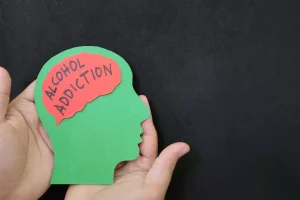
To help someone with AUD, a friend or relative can begin by reading about AUD and the reasons it might develop. It is important to acknowledge AUD as a brain disorder. It is also necessary to understand the social and psychological reasons why someone may develop AUD. Members work together to help the alcoholic who still suffers.

Long-term outlook for alcohol use disorder

Many health care providers can play a role in treatment. Below is a list of some of the providers who are typically involved in alcohol treatment and the type of care they may offer. See the Frequently Asked Questions for helpful alcohol addiction help suggestions. Also, be sure to look for the other types of treatment providers—therapists with addiction specialties and alcohol treatment programs. Your health care provider or counselor can suggest a support group.

Get help for substance abuse
- The NIAAA Alcohol Treatment Navigator® cannot ensure that the search process will deliver higher-quality treatment providers in your vicinity who are using evidence-based approaches.
- Staging an intervention involves a doctor or an intervention specialist approaching the person along with family and friends.
- However, it is crucial that an individual with AUD receives professional medical help, as well.
- Overcoming AUD is an ongoing process—one that can include setbacks.
Couples and family counseling incorporates spouses and other family members in the treatment process and can play an important role in repairing and improving family relationships. Studies show that strong family support through family therapy increases the chances of maintaining abstinence (not drinking) compared with people going to individual counseling. AUD is characterized by an impaired ability to stop or control alcohol use despite adverse social, occupational, or health consequences. Health care providers diagnose AUD when a person has two or more of the symptoms listed below.
Step 4: Be gentle but assertive
- Are you ready to quit drinking or cut down to healthier levels?
- For more information on a return to drinking, see An Ongoing Process.
- You can also benefit from the shared experiences of the group members and learn what others have done to stay sober.
- We also offer a way to compare your options and see which one is best.
- Once your loved one has identified their potential triggers, learning how to avoid them is an important part of relapse prevention.
- Learn how to find higher quality, science-backed alcohol treatment to raise your changes for success.
- Please donate today to help us save, support, and change lives.
Think of them as your personal cheerleading squad, there to root for you every step of the way. Once detox is complete, many people move on to inpatient rehabilitation programs. These are intensive, residential programs where you live at a treatment facility for a https://ecosoberhouse.com/ period of time, usually 30 to 90 days. It’s like boot camp for sobriety, providing a structured environment free from triggers and temptations. But it’s not just about what you can see on the outside. The behavioral and emotional indicators can be just as telling.

Watching a family member struggle with a drinking problem can be as heartbreakingly painful as it is frustrating. But while you can’t do the hard work of overcoming addiction for your loved one, your love and support can play a crucial part in their long-term recovery. If certain people, places, or activities trigger a craving for alcohol, try to avoid them. This may mean making major changes to your social life, such as finding new things to do with your old drinking buddies—or even giving up those friends and finding new ones.